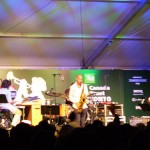Alternate fingerings on saxophone can help make patterns easier and faster.

There are three main Bb fingerings- side Bb, bis key, 1&1- but the 1&1 fingering can often be done as 1&2 or 1&3. It depends on your horn though.
There are alternates for G#/Ab too- you can hold down the left hand’s pinky on the normal key for G#/Ab or use the pinky key for low C#, low B, low Bb- they all do the same thing.
For the note D- you can use the palm key to either make it open up, or as a faster fingering in some situations.
High E can be played similarly to the high F fingering that doesn’t use the palm keys. You also put the second finger of your right hand down.
If you immediately spot some I left out, leave a comment!



C# second octave (open fingering, no octave key) is usually out of tune, so when intonation is important, I play the low C# fingering with the octave key. There are more alternates that I have discovered for the lower register, but I have forgotten them. There are plenty to find if you experiment with modifying lower-register fingerings to find overtones and harmonics of higher tones that have “normal” fingerings. Did that make sense? It’s kind of the same concept behind the fingerings for top tones (altissimo).
I’ve heard and seen David Sanborn do this to change the tone of the left middle finger C by alternating between it and low C with octave key. He’ll alternate between the two in order to toggle a “fat” C sound with a “lean” C sound which adds a bit of soul or funk to a riff. I’ve also used that fingering to good effect and it’s pretty fun.
Thanks for the suggestion Paul. Use the palm key D/normal D fingering a little bit myself to go between the different shades of tone that they each have. Michael Brecker played around with alternative fingerings a bit in Delta City Blues.